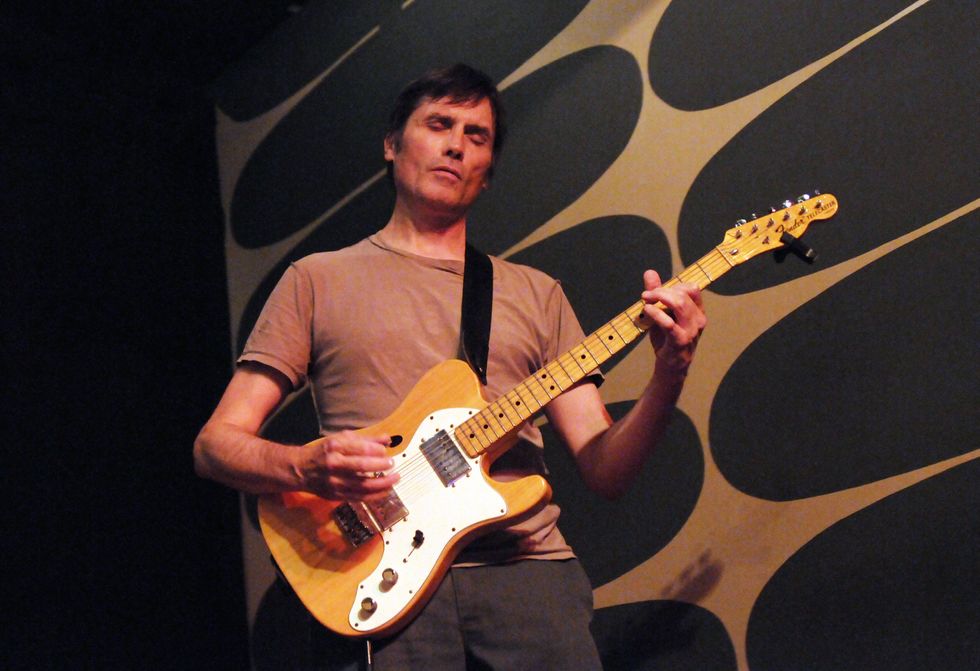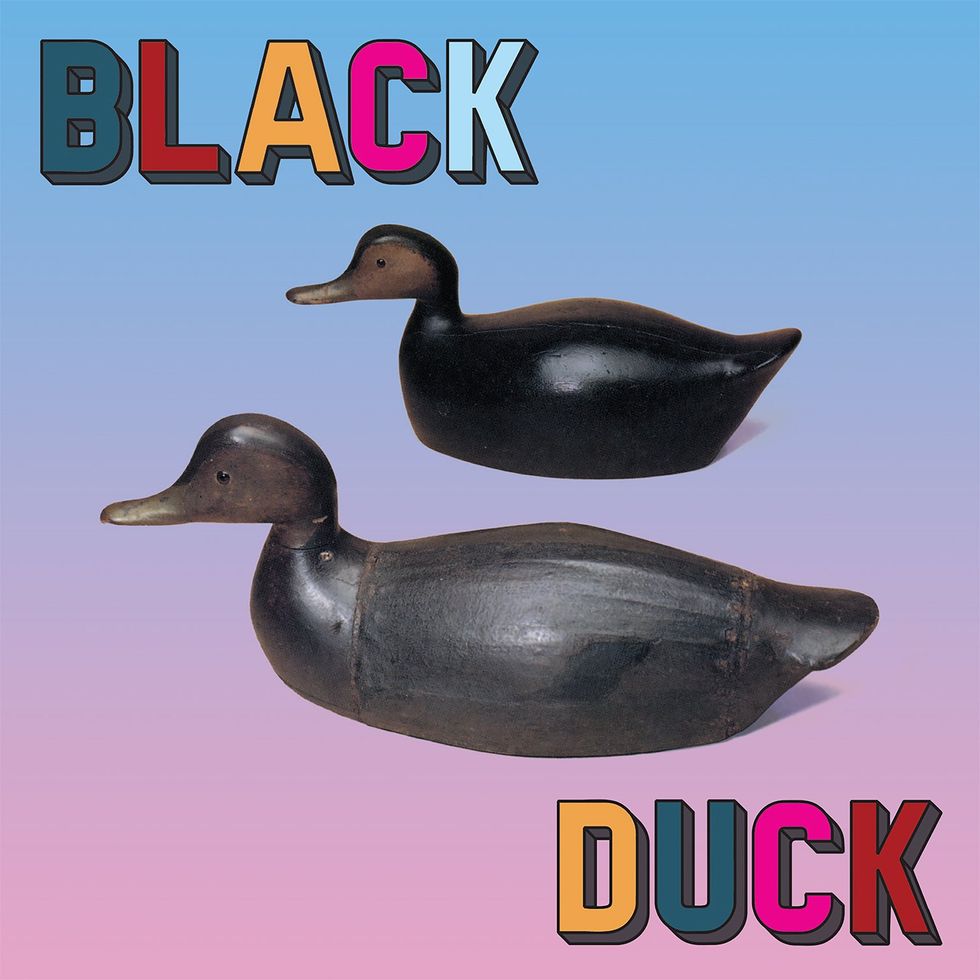Black Duck are drummer Charles Rumback and guitar players Douglas McCombs and Bill MacKay.
Chicago trio Black Duck’s self-titled launching album is a taking in collection of climatic, even cinematic, Midwestern-noir. The band’s 3 linchpin instrumentalists– guitar player Bill MacKay, guitarist/bassist Douglas McCombs, and drummer Charles Rumback– conjured the bulk of the music out of studio improvisations, had fun with an unwinded, nuanced style that fans of each of these significant free-ranging artists will acknowledge.
Lemon Treasure
McCombs is referred to as an establishing member of post-rock leaders Tortoise, along with the leader of important Americana group Brokeback. He’s likewise the long time bassist for prominent alt-rock attire Eleventh Dream Day. MacKay’s endeavors, on the other hand, consist of visitor stints with McCombs’ Eleventh Dream Day and duo cooperations with the similarity banjoist Nathan Bowles, together with a series of solo albums, plus 2 elaborate crucial LPs made with songwriter-guitarist Ryley Walker. Rumback, who fulfilled MacKay in college, likewise taped 2 exceptional crucial discs with Walker, and has actually launched numerous albums as a leader, too. Maybe the most engaging is 2020’s standout, June Holiday (including remarkable Windy City pianist Jim Baker). Improvisation has actually been Black Duck’s preliminary focus onstage, and studio improv yielded the majority of the tracks on the brand-new album. 3 hook-laced structures– one brought to the session by each member of the band– serve as sonic camping tent poles for Black DuckWelcoming opener “Of Lit Backyards,” composed by McCombs, is a loping, lyrical number that McCombs refers to as “sort of Roy Orbison satisfies Tom Verlaine.” “Delivery,” MacKay’s grumbling contribution, develops to something much darker and more unpredictable, as if Link Wray scored a spaghetti Western shootout. Rumback’s pensive “The Trees Are Dancing” might be the most engaging of the 3, with gorgeous guitar tunes unspooling over a stalking bassline and clapping drums. Although each started as a solo structure, McCombs mentions that these tracks all wound up as group plans when recognized for Black Duck
Costs MacKay’s Gear

Black Duck improvises a great deal of their music, however guitar player Bill MacKay states there’s generally a style that their tunes center on.
Image by Jim Summaria
Guitars
- 1975 Fender Thinline Telecaster with Fender humbuckers
- 1976 Gibson Les Paul Custom
Amps
- 1970 Fender Princeton Reverb
Pedals
- – Wampler cata
- Pulp ThroBak Overdrive Boost
- Manager RV-3
- Death By Audio Reverberation Machine
Strings, Picks, & & Slides
- Ernie Ball, combined set of Power Slinky and Regular Slinky (.011 -.046)
- Ernie Ball Power Slinky (.011 -.048)
- Gibson XH Extra Heavy Standard Pick (1.17 mm)
- Dunlop Gator Grip (1.14 mm)
- Dunlop Gator Grip (1.50 mm)
- Diamond Bottlenecks Pill Bottle glass moves
McCombs, who relocated to Chicago in 1980 from small-town Illinois, explains the music neighborhood of his adopted city as “having a genuine openness to experience.” Black Duck, he states, is an item of its environment. “The numerous imaginative music scenes in Chicago, whether jazz and improvisation or electronic music or rock or whatever, sort of intersect in a basic swirl of imagination,” he states. “When we initially began performing out as a band, we played the Constellation, a progressive, European-style location here that has a genre-less visual that all of us relate to. Ultimately, we played the Big Ears Festival in Knoxville, where I believe we suit well as an improvising group.”
Starting in the ’80s, McCombs was influenced by hard rock, and atrioventricular bundle Tortoise made its renown for studio experimentation. “Bill and Charles have more experience as live improvisers than I do,” he discusses. “But the main point behind Black Duck, for me, was to more establish my guitar playing through improvisation in a group setting, to broaden myself as an artist. The 3 people do not practice that much or perhaps have a great deal of conversation, having actually cultivated our musical relationship on phase. We attempt to keep things instinctual, instinctive, open. From the very first, the trio seemed like it had the prospective to get actually extensive or be more intimate– the music appears to have a great deal of pliability.” McCombs states there’s space for Black Duck to “get more ‘out,'” however the more “‘inside'” noise of Black Duck is simply what took place when they entered into the studio.
McCombs plays a Fender Jazzmaster on the record, along with an Allparts Baritone Telecaster to complete the bottom end on numerous tracks, such as “Delivery.” He likewise overdubbed bass on a couple of tunes with his Guild B-30 acoustic bass guitar. “I’ve never ever been among those gamers searching for the ideal guitar,” McCombs states. “I’ve constantly been somebody who tended to adjust to my instruments. My entrance to the guitar from bass was a Fender Bass IV in the ’90s, which I played a lot in Tortoise and Brokeback. I then went to my Jazzmaster out of my love for Verlaine and his noise. The scale of it felt comfy originating from bass, and I likewise like the adaptability of the Jazzmaster’s pickup sounds. When it comes to my baritone Tele, it includes more low-end to a two-guitar band. I likewise enjoy the Duane Eddy twang you can receive from it.”
“The numerous imaginative music scenes in Chicago, whether jazz and improvisation or electronic music or rock or whatever, sort of intersect in a basic swirl of imagination.”– Douglas McCombs
MacKay, a Pittsburgh local who settled in Chicago in 1998, can have fun with what McCombs calls “a genuine rock guitar feel, that Stones-y, chooglin’ thing you can hear in ‘Delivery,’ a technique that tends to be more chordal than my note-y method. Our designs are complementary, I believe.”
MacKay concurs that he and McCombs inhabit various area. “Douglas is an extremely various guitar player than, state, Ryley Walker,” states MacKay. “I tend to bob and weave a lot with Ryley, whereas Doug and I will play in more marked rhythm and lead functions. Or if I’m doing a slide thing, he’ll be pulsing, as takes place in ‘Lemon Treasure’ on the album. You can likewise get a concept of our guitar weave truly well on the improv ‘Second Guess.’ We’re both fans of full-frequency guitar playing. As a bassist, too, Doug is acutely knowledgeable about the bottom even when he’s playing guitar. His baritone instrument aids with that, naturally. Having some low-end focus in there implies that the music can resonate with a listener’s body in addition to their minds.”
Douglas McCombs’ Gear

The 3 members of Black Duck state they’re experiencing an uptick in carrying out chances for improvised music just recently, consisting of Big Ears and other noteworthy celebrations.
Image by Evan Jenkins
Guitars/Bass
- 1964 Fender Jazzmaster with Mastery bridge
- Allparts Baritone Telecaster with Fralin pickups and Bigsby tremolo
- 1970s Guild B-30 acoustic bass guitar
Pedals
- Alan Yee Last Temptation of Boost
- Fulltone Full-Drive2
- ZVEX Woolly Mammoth
- Lehle Mono Volume
- Moog Moogerfooger MF-104Z
- EarthQuaker Disaster Transport
- TC Electronic Ditto Looper
- Electro-Harmonix Freeze Sound Retainer
- Moog Moogerfooger MF-102 Ring Modulator
Amps
- 1960s Ampeg B-18N Portaflex
- Victoria Victorilux 3×10 Combo
Strings, Picks, Cables
- D’Addario EJ21 XL Jazz Light (.012 -.052), with injury G string for JazzMaster
- D’Addario baritone sets
- Dunlop Orange Tortex selects
- Divine Noise guitar cable televisions
MacKay states Black Duck sounds various than anything the 3 artists may do by themselves. Having 3 unique point of views bouncing around produces more possibility. “Charles and I understand the shared instructions we can decrease and follow each other,” states MacKay. “With Doug in the mix, it makes things more flammable.”
Black Duck’s music is spontaneous, however there’s some form of order to the spontaneity. “Improvisations appear most effective to me when they have something of a compositional quality,” states MacKay. “With this band, we’re not beginning with total abstraction like more jazz-oriented improv groups. Among us will have a style or a concept we can fixate. For the improvised piece ‘Thunder Fade That Earth Smells,’ I highlighted a little bit of a riff that I had actually played in the past, something heavy and fuzzy that might play off the more heavenly areas. I like having an unheard riff in my back pocket like that, and seeing how the other men respond to it.”
MacKay plays a “beautiful stock” 1975 Fender Thinline Telecaster on Black Duck“other than that it has Fender humbuckers, which are effective,” he describes. “It’s a dream guitar to play, with a great deal of terrific tones beyond the normal Telecaster twang. You can get clear, tidy tones, however the pickups are hot, so the Tele can be pressed into some unclean noises. It’s a partial hollowbody, so it has some genuine resonance, too. It has actually been my primary carrying out guitar for a long while.” MacKay likewise plays a ’76 Les Paul Custom that he’s had for years. “It’s all stock, other than for a brand-new wall cable,” he states. “The Gibson is an exceptional well-rounded instrument, as it has both heat and bite, with a lot color.”
“I’ll see an instrumentalist carry out and it stimulates something in me. That experience can arrange of clear the connections and enable brand-new energy to come through. To me, that’s a sort of transcendence.”– Bill MacKay
MacKay’s essential results pedals for Black Duck consisted of a ThroBak booster (which “is based upon the Colorsound Overdriver, for that classic Jeff Beck/David Gilmour noise”), a Wampler cataPulp (“for good distortion tones, based upon the Orange Rockerverb amp”), and a Boss RV-3 reverb/delay (“which I’ve utilized for every program and album for more than 20 years”). When it comes to McCombs, he summons a selection of environments by means of his board of hold-up, fuzz, overdrive, and looper impacts, that include Alan Yee’s Last Temptation of Boost pedal (with more information in the equipment list listed below).

The simpleness of the album cover belies the depth of imagination and improvisational transcendence in Black Duck’s tape-recorded launching.
At 43, Rumback is the youngest of the trio, having actually moved from his native Kansas to Chicago in 2001. McCombs credits the drummer’s “extreme understanding of rhythm and the method his playing balances strength with a sense of restraint” with constructing out Black Duck’s noise, and MacKay includes that Rumback “has his own voice on the drums.” “He completely is himself on his instrument, which is much easier stated than achieved,” states MacKay. “He puts beats with his phrasing in such a private, individual method. With drums as much as guitar, phrasing resembles breathing. It’s a subtle however powerful element of music.”
Critical acts might never ever be on Top of the Pops, however MacKay takes heart in “just how much crucial music there appears to be, peaceful or loud, on celebration costs.
“There appears to be an openness to abstraction in music nowadays,” he states. “Words and the human voice have their own unique meaningful power, obviously, however I believe there’s an area in critical music where listeners can discover themselves. I understand that I’ve remained in a rut often, however I’ll see an instrumentalist carry out and it triggers something in me. That experience can arrange of clear the connections and permit brand-new energy to come through. To me, that’s a type of transcendence.”
YouTube It
Here, a recording of a live set at a record shop in Milwaukee catches Black Duck at their most raw and effective.
Black Duck Casts a Cinematic Spell posted first on https://www.twoler.com/
No comments:
Post a Comment